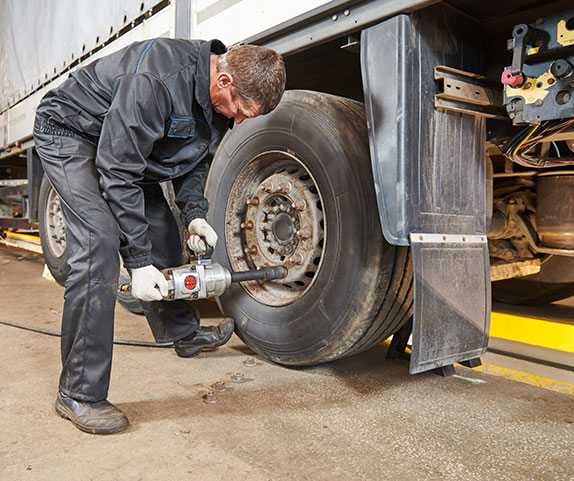Elevate Your Trip: Depend On Morris Tires for GMC Tires Service
Elevate Your Trip: Depend On Morris Tires for GMC Tires Service
Blog Article
Tire Solution: The Impact of Climate Condition
When it comes to ensuring optimal efficiency and security on the roadway, recognizing the effect of weather problems on tire solution is critical. GMC Tire Service. In this conversation, we will certainly explore the elaborate relationship in between climate problems and tire service, dropping light on the importance of weather-specific tire maintenance practices and considerations.
Warmth and Tire Performance
When revealed to high temperatures, tires experience changes in performance that can dramatically impact vehicle safety and handling. The warm created from prolonged driving or warm weather condition conditions triggers the tire rubber to soften, leading to decreased walk life and increased wear.

Winter Impacts
Winter conditions can have a substantial impact on tire efficiency and safety and security. As temperature levels decline, tire rubber can harden, leading to reduced traction on icy or snow-covered roads. In winter, tires may also shed atmospheric pressure extra swiftly, which can impact handling and gas effectiveness. Additionally, cool temperatures can cause tire sidewalls to stiffen, enhancing the risk of damages from pockets or other road hazards.
To reduce the effects of winter on tires, it is essential to frequently examine tire stress and inflate them to the maker's advised degrees. Making use of winter or all-season tires developed for chilly climate conditions can also improve grip and grip on icy or snowy roads. Appropriate tire maintenance, consisting of routine assessments for wear and damages, becomes also more important during chillier months to guarantee ideal performance and safety and security.
Rainy Conditions Impact
During stormy conditions, tire performance and safety can be dramatically affected by the wet road surface areas and decreased presence. The tread pattern of tires plays a vital role in preserving grip on wet roadways. Tires with damaged treads are a lot more susceptible to hydroplaning, where a layer of water accumulates in between the road and the tire surface area, resulting in loss of traction. To combat this, motorists need to frequently check their tires for adequate step depth and think about buying tires especially made for damp problems.
Additionally, stormy weather condition can additionally reduce exposure, making it challenging for chauffeurs to see the roadway ahead check this site out plainly (GMC Tire Service). In such conditions, it is necessary to readjust driving rates accordingly and maintain a safe adhering to range to enable for sudden quits. Effectively inflated tires can additionally aid in preserving control on damp roads by providing far better handling and grip
Snow and Tire Security
When driving in snowy conditions, having the ideal tires can make a significant difference in security and performance. Winter months tires are developed with unique rubber substances and step patterns to offer far better grip on snow and ice compared to all-season tires.

Furthermore, drivers must take into consideration installing tire chains in severe snowy problems. Tire chains provide additional grip by clutching the snow and ice, enhancing stability and control. Nonetheless, it is very important to adhere to manufacturer directions when making use of and mounting tire chains to stop damage to the tires useful reference and lorry. By choosing the right tires, maintaining proper rising cost of living, and considering extra traction aids like tire chains, motorists can boost their safety when navigating snow-covered roads.
Weather-Related Tire Maintenance
When faced with various weather, correct tire maintenance becomes a critical facet of car safety and efficiency. Weather-related tire upkeep includes a variety of techniques targeted at making certain optimal tire function and long life in various climate scenarios. One key facet of weather-related tire maintenance is tire pressure regulation. Rising and fall temperatures can cause tire stress to vary, affecting grip and fuel efficiency. Frequently adjusting and checking tire stress according to producer suggestions is vital for safe driving in altering climate condition. Furthermore, tire step deepness plays a substantial function in handling various weather condition components. Tires with ample walk deepness navigate to this site supply far better grip on wet or icy roads, decreasing the danger of hydroplaning or skidding. Evaluating tire step regularly and changing tires when tread wear gets to a certain depth is crucial for keeping traction and security in negative weather. By focusing on weather-related tire maintenance, chauffeurs can boost safety, improve lorry efficiency, and extend the lifespan of their tires.
Final Thought
In final thought, climate problems have a significant effect on tire performance and security. From heat influencing tire pressure and use to cold climate reducing traction, it is necessary to think about the weather when maintaining and utilizing tires.
In this discussion, we will certainly check out the elaborate connection between weather condition problems and tire solution, losing light on the significance of weather-specific tire upkeep techniques and factors to consider.

Report this page